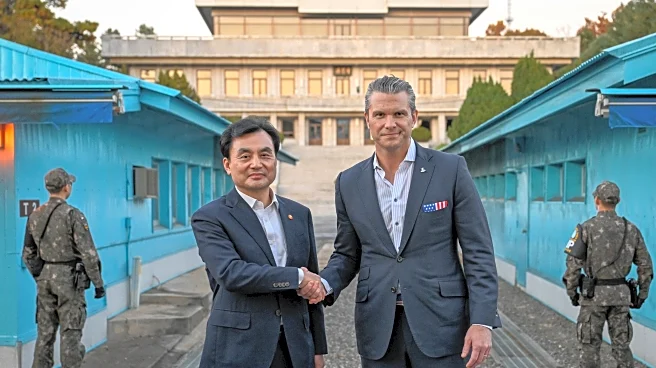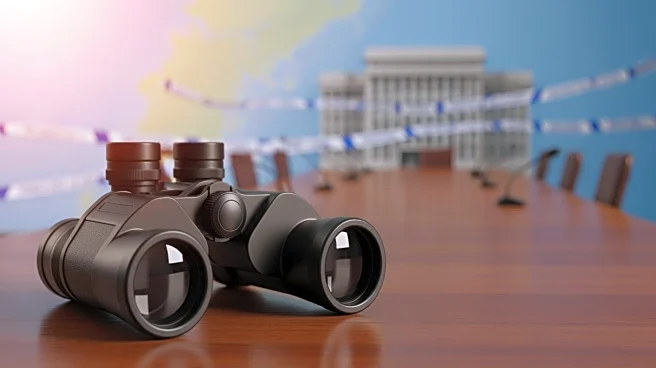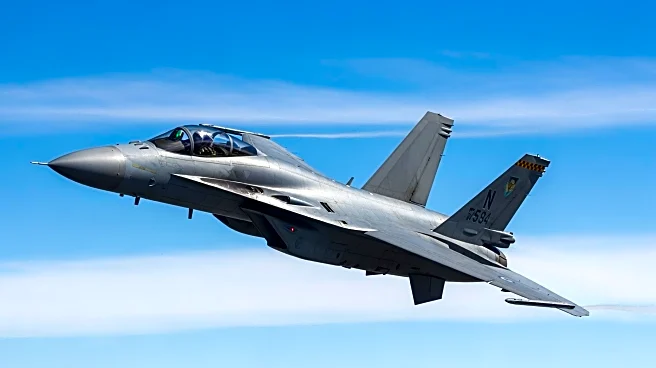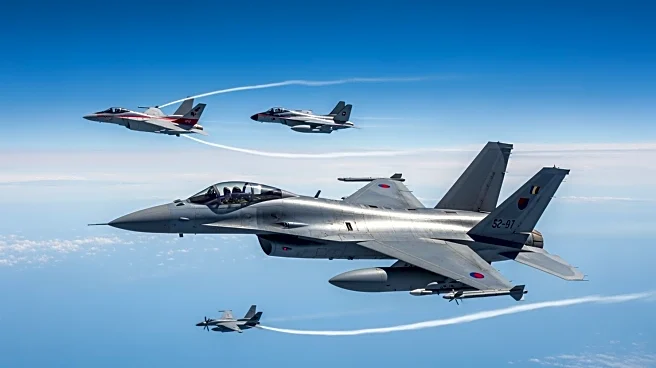What's Happening?
United States Chairman of the Joint Chiefs of Staff General Dan Caine, alongside his South Korean counterpart, conducted a joint flight in fighter jets to showcase allied air power to North Korea. This unprecedented flight marks the first of its kind
in the 72-year history of the U.S.-South Korea alliance. The demonstration was part of General Caine's visit to South Korea, where discussions centered around North Korea's advancing nuclear and missile capabilities and the broader global arms competition. The flight involved U.S. F-16 and South Korean KF-16 fighter jets, accompanied by additional aircraft, and covered areas including Osan, Chuncheon, Daejeon, and Camp Humphreys. The event highlighted the strength and development of the U.S.-South Korea alliance, emphasizing the combined defense posture and the enduring power of the partnership.
Why It's Important?
The U.S.-South Korea alliance, established under a mutual defense treaty post-Korean War, is crucial for regional security, especially in light of North Korea's growing military capabilities. The U.S. commitment includes approximately 28,500 troops stationed in South Korea and the provision of advanced military equipment, such as F-35A stealth fighter jets. The joint flight underscores the alliance's readiness to counter threats and maintain peace on the Korean Peninsula. The demonstration also reflects the strategic importance of the Indo-Pacific region, where North Korea's military ambitions, supported by Russia, pose a complex security challenge. The alliance's focus on deterrence extends beyond the Korean Peninsula, contributing to broader regional stability.
What's Next?
Future adjustments to U.S. Forces Korea missions may be necessary to effectively deter and defend against North Korean aggression and other regional threats. Discussions between U.S. Defense Secretary Pete Hegseth and South Korean officials suggest a flexible approach to utilizing U.S. forces in response to regional contingencies. The ongoing commitment to a robust combined readiness posture will be crucial in addressing evolving security dynamics in the Indo-Pacific region.
Beyond the Headlines
The joint flight and military discussions highlight the ethical and strategic dimensions of maintaining peace through military strength. The alliance's focus on deterrence raises questions about the balance between military preparedness and diplomatic efforts in achieving long-term stability. The evolving security environment in the Indo-Pacific region may necessitate new approaches to alliance management and regional cooperation.














